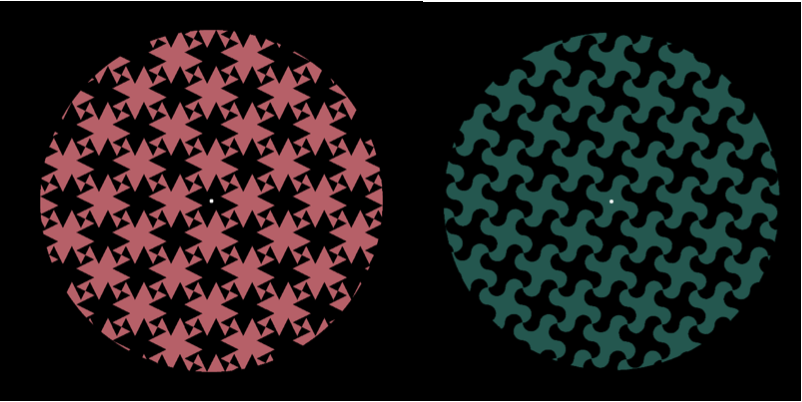Multi-Feature Processing in Brains and CNNs
In one of my central lines of work, I've been studying how visual systems, both biological and artificial, encode combinations of multiple visual features.
Taylor, J., & Xu, Y. (2023). Comparing the Dominance of Color and Form Information across the Human Ventral Visual Pathway and Convolutional Neural Networks. Journal of Cognitive Neuroscience, 35(5), 816-840.
Taylor, J., & Xu, Y. (2022). Representation of color, form, and their conjunction across the human ventral visual pathway. Neuroimage, 251, 118941.
Taylor, J., & Xu, Y. (2021). Joint representation of color and form in convolutional neural networks: A stimulus-rich network perspective. PLOS One, 16(6), e0253442.
Taylor, J., & Xu, Y. (2022). Identifying the neural loci mediating conscious object orientation perception using fMRI MVPA. Cognitive Neuropsychology, 1-4.
Vaziri-Pashkam, M., Taylor, J., & Xu, Y. (2019). Spatial frequency tolerant visual object representations in the human ventral and dorsal visual processing pathways. Journal of cognitive neuroscience, 31(1), 49-63.
Taylor, J., & Xu, Y. (2017). To bind or not to bind? Neural coding of color and shape. Talk presented at the 47th Annual Meeting of the Society for Neuroscience. Washington D.C.
Taylor, J., & Xu, Y. (2019). Conjunctive Coding of Color and Shape in Convolutional Neural Networks. Poster presented at the 3rd annual meeting of the Cognitive Computational Neuroscience Conference. Berlin, DE.
Taylor, J., & Xu, Y. (2019). The Coding of Color, Shape, and their Conjunction Across the Human Ventral Visual System. Talk presented at the 19th annual meeting of the Vision Sciences Society Conference. St. Pete Beach, FL.

DNN Feature Extraction
I recently released an open-source Python package, TorchLens, for easily extracting intermediate layer activations from arbitrary PyTorch models and visualizing their computational graph with minimal code. It remains in active development and I welcome suggestions for how to make it more helpful.
Taylor, J., & Kriegeskorte, N. (2023). Extracting and visualizing hidden activations and computational graphs of PyTorch models with TorchLens. Scientific Reports, 13(1), 14375.

Task-Relevant Visual Processing
I have used MVPA and connectivity approaches to study how task demands affect object representations in occipitotemporal, visual, and frontal cortex.
Taylor, J. and Xu, Y. (2020). Mixed Selectivity for Task and Stimulus Category in the Human Visual System (Manuscript in prep)
Taylor, J., Vaziri-Pashkam, M., & Xu, Y. (2017). Effect of task on object category representations across human ventral, dorsal, and frontal brain regions. Poster presented at the 17th annual meeting of the Vision Sciences Society. St. Pete Beach, FL.
Taylor, J., Vaziri-Pashkam, M., & Xu, Y. (2016). Attention to Object Form Modulates Informational Connectivity Between Dorsal and Ventral Visual Streams. Poster presented at the 46th Annual Meeting of the Society for Neuroscience. San Diego, CA.

Visual Short Term Memory
In another line of work, I've been studying how to most efficiently localize the superior IPS, a brain region that tracks the contents of visual short-term memory, finding that remembering abstract shapes drives this region more strongly than remembering real-world objects.
Taylor, J., and Xu, Y. (2018) Efficiently Defining the Human Superior Intraparietal Region that Tracks Visual Working Memory Performance. (Manuscript in prep)


Face Perception
In past work with Gregory McCarthy, I studied how the electrophysiological markers of face perception varied between faces that were equated for their perceptual familiarity, but that differed in their level of associated semantic knowledge, finding that hallmarks of knowledge for face identity emerged as early as 200ms.
Taylor, J., Shehzad, Z., & McCarthy, G. (2016). Electrophysiological correlates of face-evoked person knowledge. Biological psychology, 118, 136-146.
Shehzad, Z., Taylor, J., & McCarthy, G. (2015). VATL Contributes to Biographical Knowledge of Faces via Feedback to FFA. Poster presented at the 45th Annual Meeting of the Society for Neuroscience. Chicago, IL.






